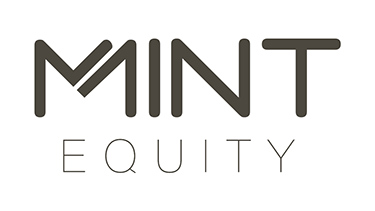Investing in the property market remains a sure-fire way to enhance your lifestyle while building wealth. But when it comes to plotting your course through the world of real estate, there can be more questions than answers.
A big one, of course, is: build or buy?
When many people think about real estate, they imagine the white picket fence, strolling up the garden path to the front door and turning the key. Indeed, buying an existing home is the easiest route.
Normally, you can move straight in, the garden, fences and other features like swimming pools are established, and you can get in a building inspector to ensure you're making a good choice.
But as housing affordability continues to plummet, building a home from scratch may in fact be a more attractive option - indeed, the phenomenon of 'camping out' to be first in line when new developments go on the market is a growing one in Australia.
That's because buying off the plan can often cost you less than buying an established home. And it's not just the 'ticket price' of the land plus the building, there are also tax, stamp duty and first home buyer benefits. While the delay between paying a deposit and actually moving in can mean capital growth, you’ll still need to fund your current living arrangements whilst the property is being built.
Construction finance
Construction finance differs fundamentally to normal home loans because you don't need all of the funds upfront. This can be a key benefit when it comes to interest payments, because your full loan commitment only builds up in stages, ranging from the purchase date of the land, the laying of the floor, roof, the lock-up and the final key hand-over.
This sort of finance adds a level of complexity, as it involves a contract from the builder, but it may also be an opportunity to negotiate items, such as the establishment of things like landscaping and swimming pools, that would otherwise cost you extra money and time in the future. Read 'Risks and benefits of buying off the plan' to learn more.
Building can also give you the flexibility to tweak the plans to your liking and choose all the features and colours that will work for your family or investment strategy, while new homes are generally more energy efficient and will not need renovating for a long time.
But with the lower prices come some disadvantages. New homes may be in areas that are not as established and high in local construction noise, and the house itself may lack the character of an older one. And, unlike with an established home, you will be unable to do a housing inspection before you commit, which is why finding a good builder or developer is crucial.
5 tips for choosing a builder
- Carefully scrutinise low prices, discounts or special offers, because it might indicate low quality. It's much more important to get what you need.
- Try to negotiate a fixed price to avoid cost blow-outs. Also ask your builder if you’ll be charged more for an increase in materials.
For example, if steel prices go up between the day you sign the contract and the builder ordering the product, will be charged more? - Assess the builder's credentials, experience and warranties. Always confirm that their Home Warranty insurance is valid by calling the insurer directly.
- If using a project home builder, look around their display homes with a fine-tooth comb and a sceptical mind, checking that the build quality and particular features will be replicated in your home. Also check if the finishes in the display home are standard or additional costs.
For example, often display homes have 2.7m high ceilings, however most have 2.4m as their standard inclusion. High ceilings have a big impact on a home, so make sure you know exactly what you’re getting. - When purchasing the land, check the Council zoning and if it is in a flood or fire zone. High risk zones will impact your build costs. For example, you’ll need marine grade construction if you’re near the water and it’s likely you’ll need to modify the design and finishes of the home if in a fire zone. You’ll also need additional insurance to cover your home for the added risks, which will increase your premiums.
But if building seems all too hard, remember that even buying an established home needs to be done right, too:
5 tips for assessing an established home
- Research the suburb well and check where local services, restaurants and facilities are in relation to the property. School catchment areas are also important to check if you are moving children to new schools.
- Beware of seller and agent 'staging', making the house appear better than it really is for open inspections. It can be distracting, but you’ll need to look past the beautiful styling and uncover the property’s real flaws. Once all the lovely furniture is gone, you’ll need to live with the bones of the home.
- Don't be fooled by character - while it is attractive, there may be homes on the market at the same price that have better features and re-sale value. If it’s an older house, check if it is heritage listed. This will affect future renovations.
- Check the fittings and inclusions of a property and assess the running costs. A swimming pool with an electric heater or halogen downlights can have large ongoing costs.
- Always get a professional pest and building inspection prior to committing.








